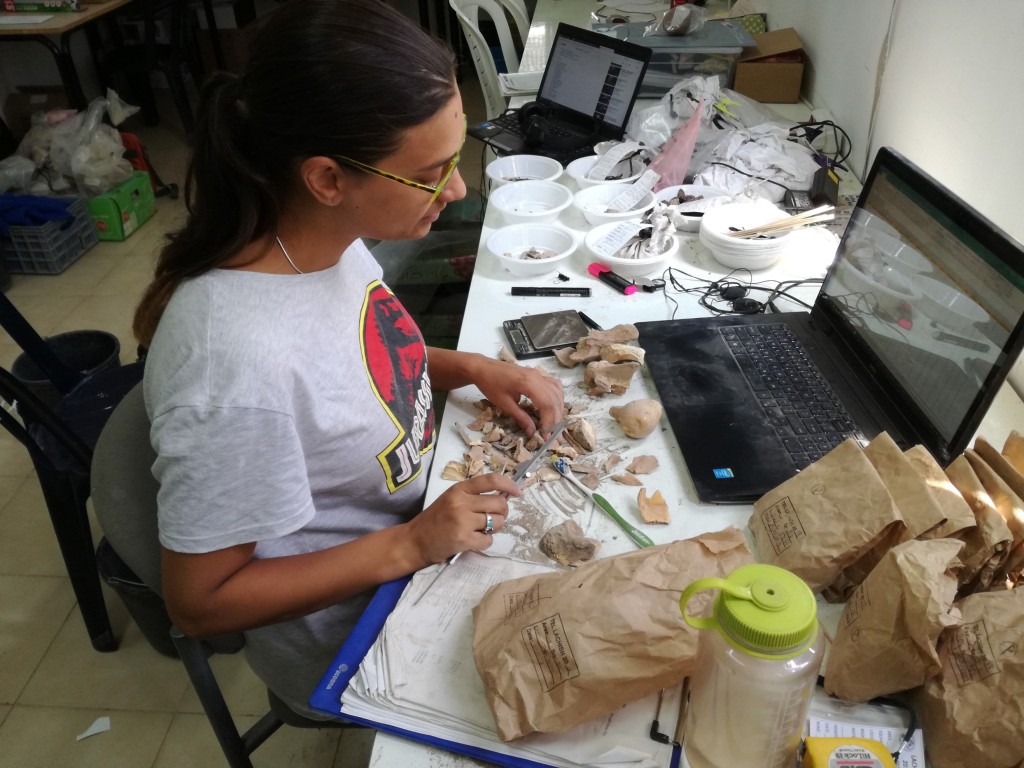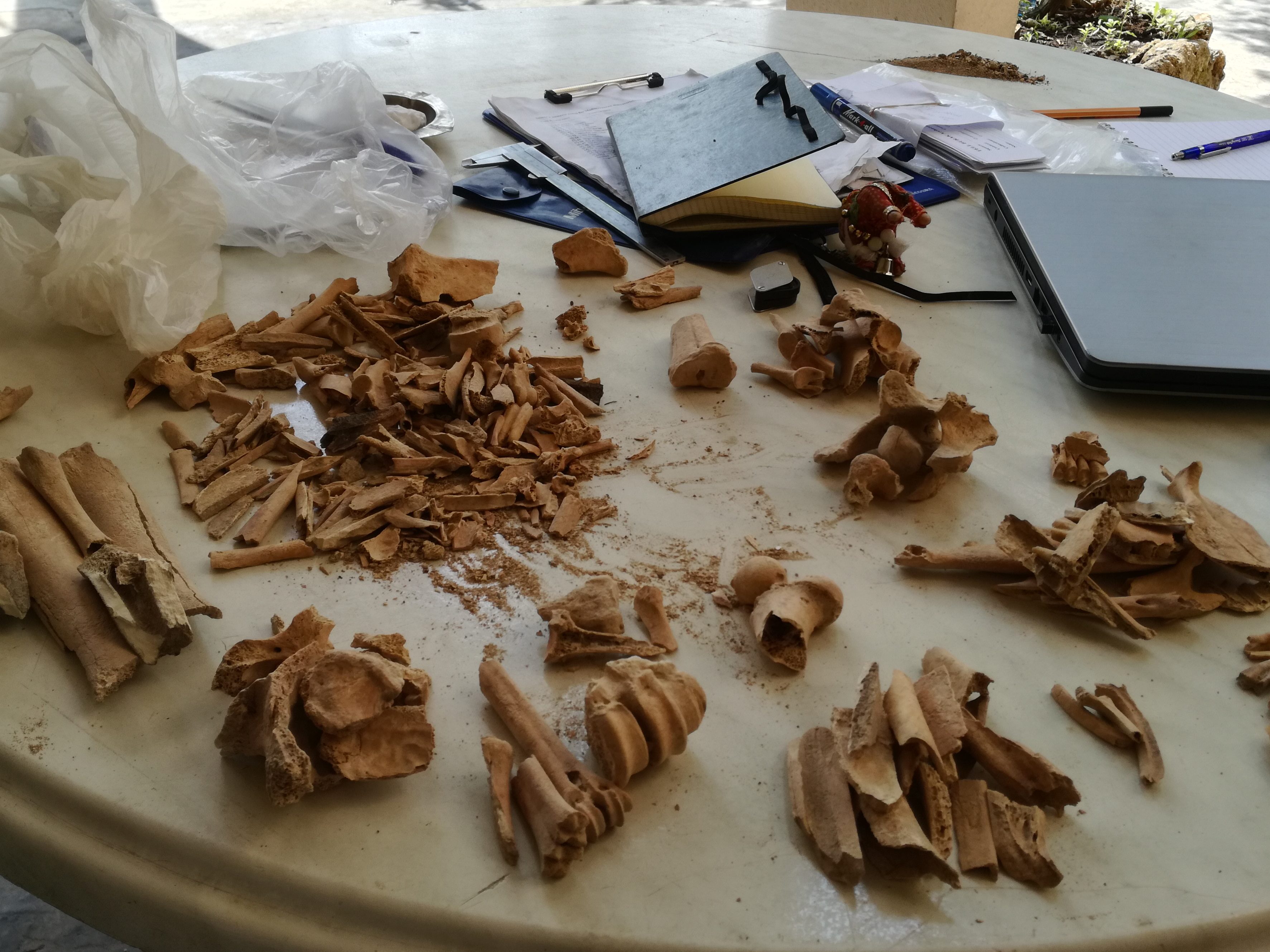
The beginning
As a child, I was fascinated with history and archaeology. I loved hearing about pyramids, mummies, lost cities in the desert and ancient civilisations. So, when it was time for me to begin my university studies in 2010, the choice was easily made for Ancient Near Eastern Studies. Since Hieroglyphics seemed to make more sense than Cuneiform, I quickly made the decision to specialise in Egyptology at the University of Leuven (Belgium).
Changing directions
After obtaining my master’s degree in Egyptology, I had grown weary of translations and the need to be able to work in more than one country became clear. Since the ancient Egyptians had a close relationship to animals, I decided to swap hieroglyphics for animal bones. In 2014, I started my second master’s degree specialising in archaeological sciences at the University of Tübingen (Germany) with a focus on zooarchaeology. This is where I truly found my field: going to excavations and analysing animal remains, processing the data afterwards using statistics, and providing meaning and context using archaeology and history. My thesis was written on the faunal remains from an early Islamic site in middle Egypt, a gentle nudge to my background as an Egyptologist.
Finding a goal
After some difficult months caused by professional and moral disagreements while on excavation, I started my PhD in 2018 at the University of Tübingen (Germany). My thesis reconstructed changes in food consumption in the southern Levant (present-day Lebanon, Palestine, Israel, Jordan) from the Bronze through Iron Ages (3,600 – 586 BCE). During my PhD, I found my true passion: combining the results of archaeological plant and animal remains to get a better picture of food consumption and farming in the past. I graduated with distinction in June 2021, during the covid pandemic.
Equity, Diversity, Inclusivity, and Outreach
The troubles I had to go through to start my PhD made me realise the toxicity, outdated morals and bias academia can have. I decided to do everything possible to make a change for the better. I have been part of several organisations, protests, and events spreading awareness. Towards the end of my PhD, I also wanted to communicate my research to broader audiences. People love archaeology and history but too often they do not have access to the latest research. In a sense, my (poor) experiences during the PhD made me who I am today: an activist who believes research belongs to everyone!


A (short) break
Six weeks after defending my PhD, I took up a support staff role at the University of Groningen (the Netherlands). For two years I was the research and teaching assistant in zooarchaeology. My job was helping out researchers, doing administrative tasks, and organising outreach events. In my free time, I wrote two major grant applications to continue my research. After I got put on the reserve list for one big grant, I decided to leave academia. The precarity, the time and effort spent on the grant seemingly wasted, and the thought of doing it all over again was too much. I applied for jobs in industry and had made peace with leaving the dream behind… until I got word that I got funding for my dream project! This was the push to finally make this website: one convenient spot where everyone can get the latest updates on my research.
Final thoughts
I hope sharing my academic background shows it is okay to not immediately know what you want to do in life. As a matter of fact, I failed chemistry and physics several times in high school and even had to do a retake in an archaeological sciences course during my bachelor’s degree… Yet, here I am now with a doctoral degree it in that field!
